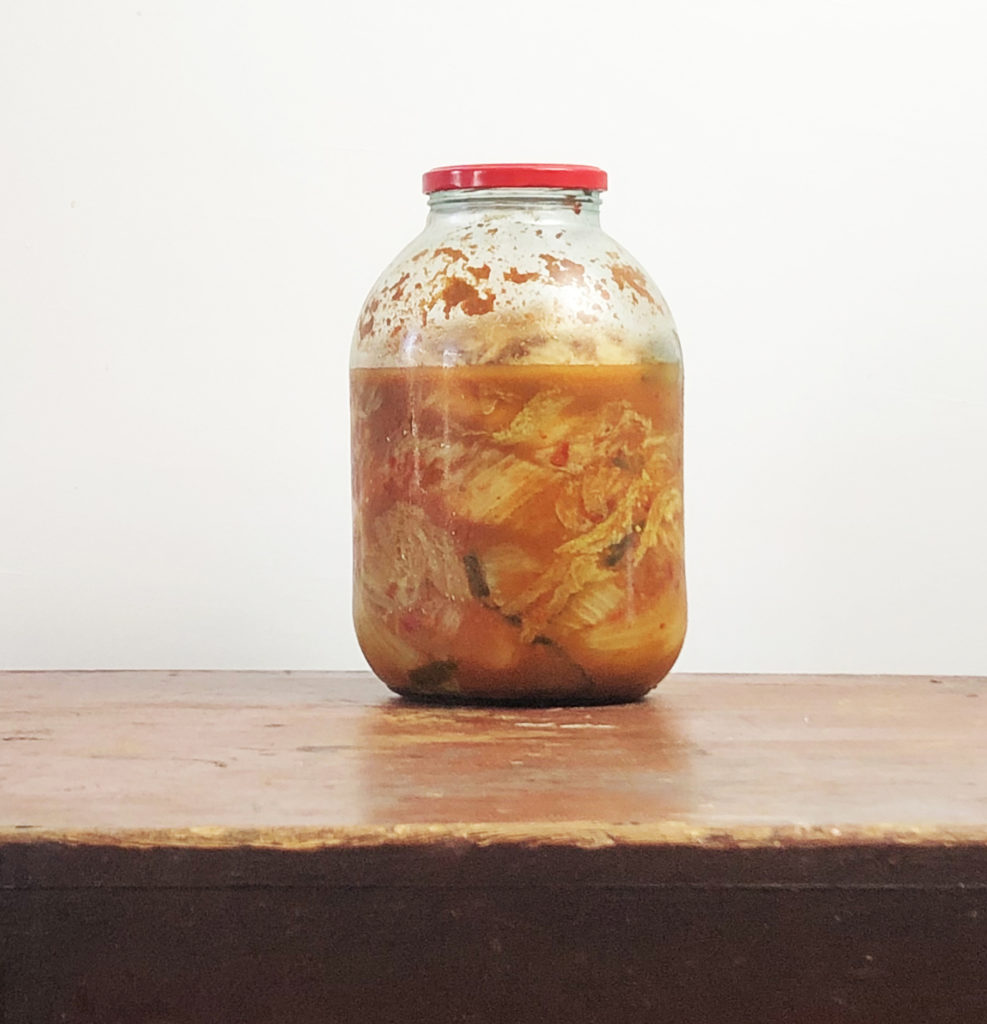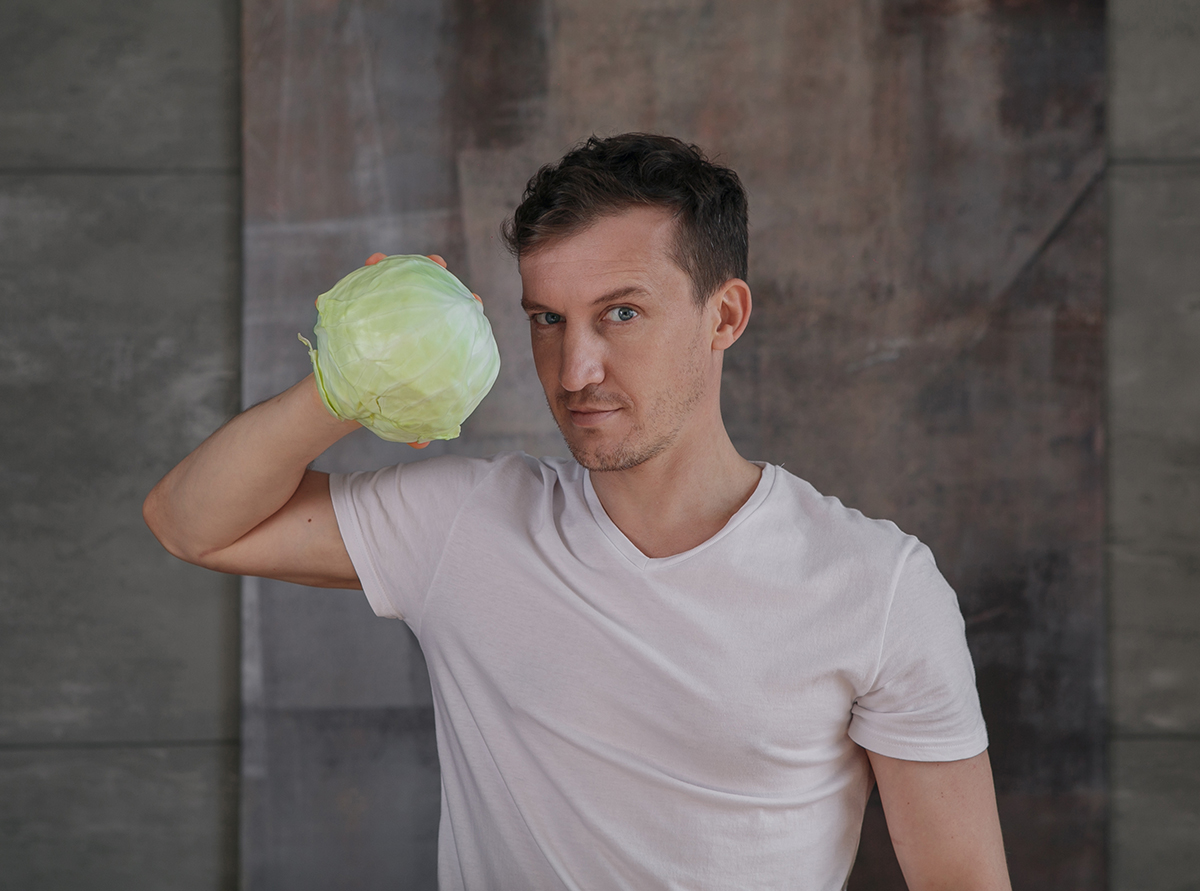1. Where is the protein?
I have a trained protein scanner: I remember how many g of protein are in any food. So I have a rough idea of whether I’m getting at my subsistence minimum of 100g a day (I weigh 77kg). This is the minimum, I usually get a little more – at the recommended 1.5g per kg body weight per day. Each meal has something responsible for protein: eggs, fish, meat, beans, cheese, cottage cheese, dairy, etc.
A typical example of my protein meal is from the article “Moderation and variety in diet: 15 photos of lunches and dinners”.
I can catch up with a protein bar as a last resort. But I consider ‘added protein’ in the form of powder or bars to be a ‘crutch’ – better than nothing, but only if I can’t walk myself – i.e. I can’t get the protein from regular meals.
2. Where are the vegetables?

It’s easier with vegetables-fruits: we buy about 8-10 kg of tomatoes, cucumbers, peppers, onions, cabbage, apples, pears, corn, herbs a week (most of them at Senniy market in St. Petersburg). Our aim is to eat them all in a week. My mouth is about 5 kg per week, or about 700 g per day. Just what the WHO prescribed and even a little more.
Sennaya market, St. Petersburg.
3. Where’s the kvashnia?

Kvass” in our shop means any fermented products: sauerkraut, cucumbers, kimchi. Some of the vegetables we buy go into fermentation. We eat about 1-2 kg of kimchi per week, which we make ourselves.
There’s a lot to say about the benefits of fermented foods. It’s also delicious.
Kimchi we made ourselves. There are lots of recipes on Youtube, we have chosen the one presented by a Korean, which got the most likes.
4. What kind of variety?
Maximum variety (within the limits of kcal) is good for your body. For example, if I make a salad, I add to it not one, but 2-3 salad oils: now pumpkin seeds, rapeseed and thistle.
I also throw a handful of mixed white and black sesame seeds and pumpkin seeds into the salad.
Another example of my lunch-dinner routine. Variety in vegetables (and styles of preparation) is also most welcome.
5. Do I want to eat?

Since I grew up, my weight has never gone beyond +/- 2-3kg from 77kg. Perhaps it’s because I’m sensitively guided by my sense of hunger and satiety (actually, apparently a mixture of factors, including genetics). I never eat “a lot” and only if I’m hungry. If I feel full, I can even leave a tablespoon of food on my plate.
The worst thing that ever happened to me in terms of eating was when I was forced to eat. And if with my grandmother it was just persuasion, probing the strength of my resistance, then in Soviet kindergarten it was a concentration camp-style compulsion. My 4-year-old neighbour would have some half-eaten cottage cheese dumped down his throat, and I would jump to conclusions and eat it through gagging. I remember vomiting once. Then, as a prize, we took turns playing film tapes.
Now if I’m full, I’ll never finish what’s left on my plate. Even if there’s just one or two spoonfuls of food or a piece of cheese left over. This does not mean that the remaining pieces of cheese on the plate go in the rubbish – we have a dozen containers in which cooked food waits a few more hours for a second chance to be eaten.
I eat breakfast at 11 or 12 o’clock, only when the first feeling of hunger comes after getting up. I am always guided by the feeling of hunger and never eat without it.
I used to think that eating breakfast was unhealthy, but now I know that it’s within the norm and depends entirely on personal habits, features and most importantly the effect on my mood.
I’m indifferent to chocolate, but I can happily have a Snickers when I’m camping – for example, during a long hike for mushrooms.
Now I only eat what I really like, the most delicious food and never eat something just because it’s “healthy”.
Thank you for reading!

